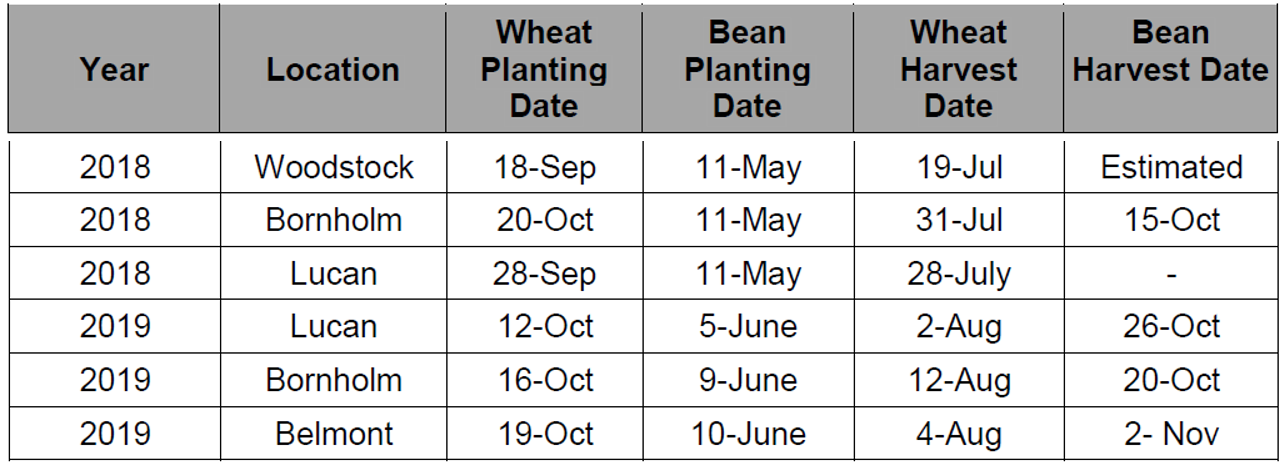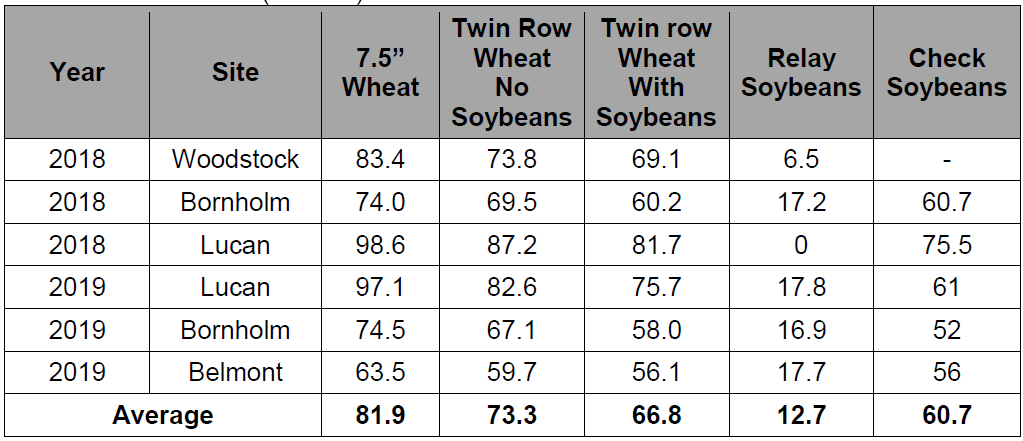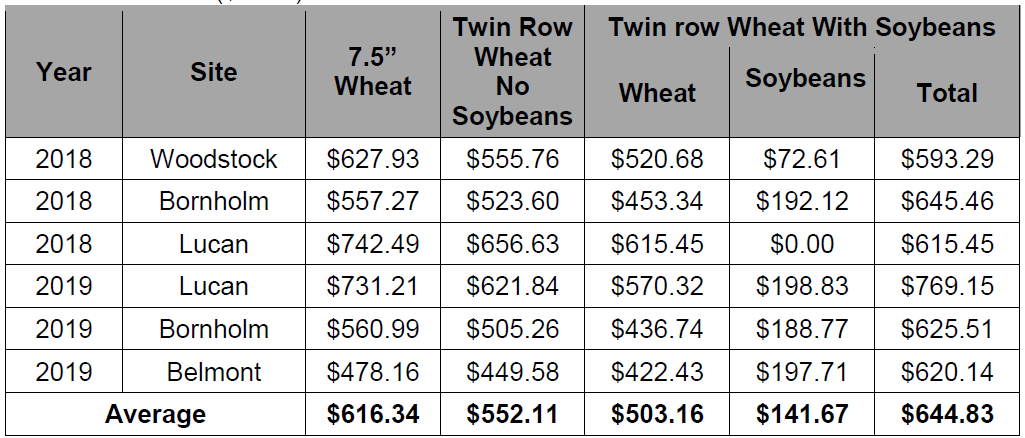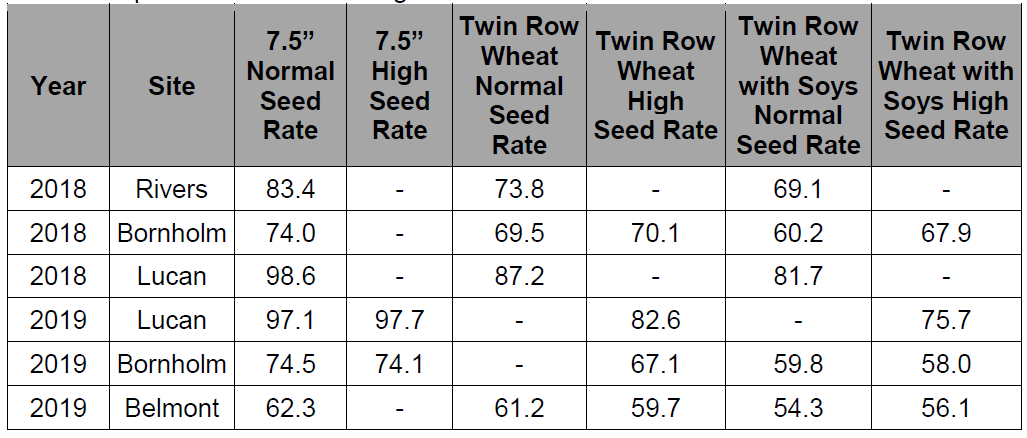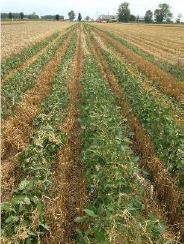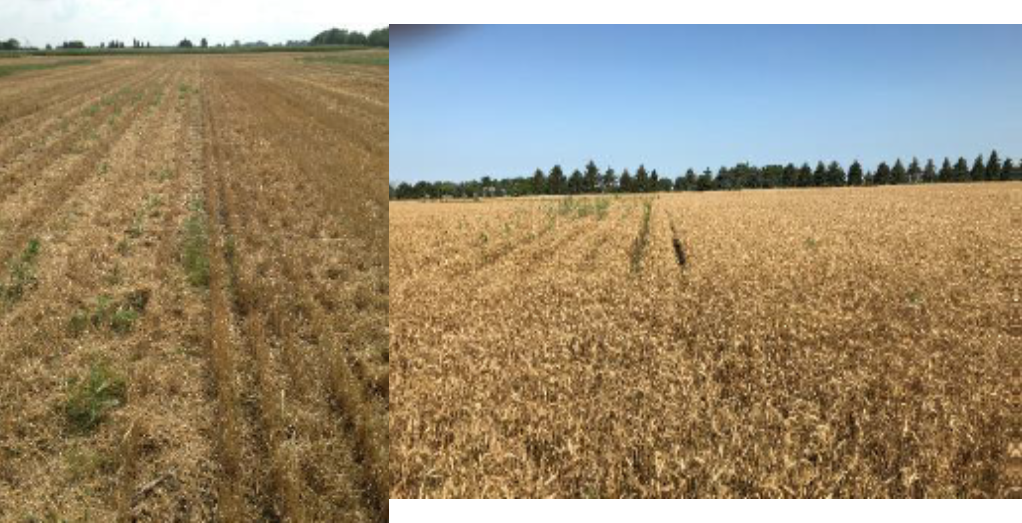Purpose
The objective of this project is to investigate and determine farming practices that allow Relay Cropping Wheat and Soybeans to have a consistent net economic return higher than either crop grown as a monocrop.
Methods
Three replicate field scale trials were conducted at 3 sites in 2018, and 3 sites in 2019. There were 3 main treatments in this trial which include:
- Wheat planted at 7.5” spacing
- Twin row wheat (two paired 7.5” wheat rows on 30” centres)
- Twin row wheat with relay soybeans (soybeans planted in the midrow gaps the following spring)
All wheat was planted using a 1560 John Deere no-till drill. To plant the twin row wheat several rows of the drill were blocked off as shown in table 1. Starter fertilizer was still applied to the rows with the blocked seed tubes.
Table 1: Twin Row Wheat Drill Setup

Soybeans were inter-seeded into the wheat using a 3pt hitch no-till drill. The soybeans were planted in 30” rows in between the twin rows of wheat (Image 1). The extra row units on the drill were removed so they wouldn’t damage the wheat. To harvest the twin row wheat with soybeans interseeded pieces of 6” drainage tile were cut to slide over the cutter bar on the header to prevent the soybeans from getting clipped (image 2).
All treatments received 120 lbs of nitrogen and 12 lbs of sulphur in the spring. All sites were sprayed with herbicide before the soybeans emerged. All sites received a T3 fungicide.
Figure 1: Soybeans Being Inter-seeded into Twin Row Wheat
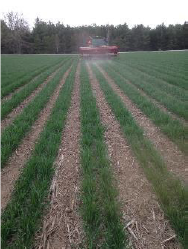
Figure 2: Header with Tile Covers for Wheat Harvest
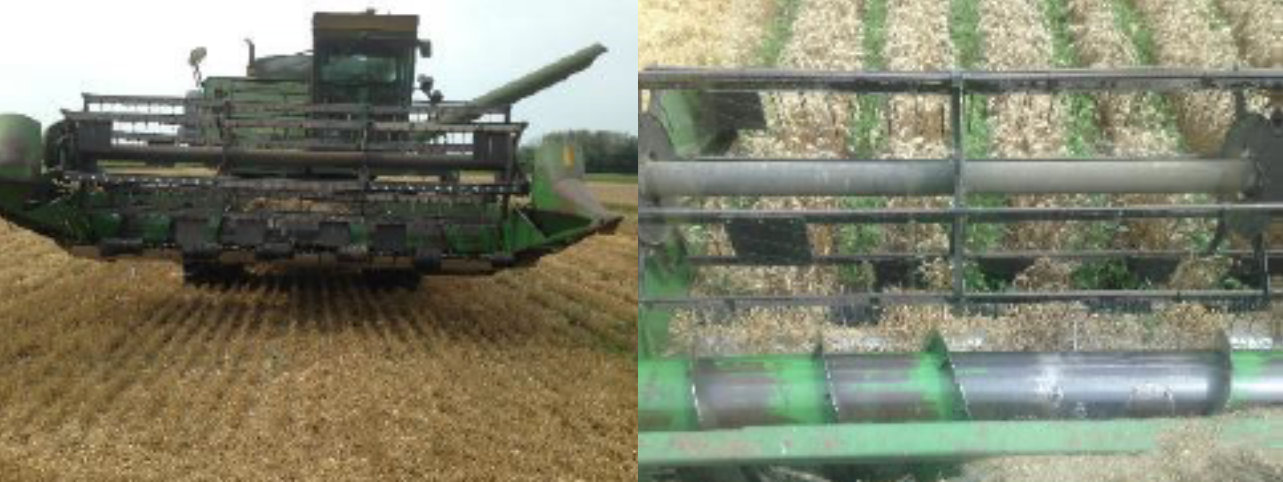
Results
The planting and harvest dates for the wheat and beans are shown Table 2. In 2018 the beans were all planted on May 11th, while in 2019 planting was delayed until June due to wet field conditions.
Yield results are shown in Table 3. Overall there was a 10% (8.6 bu/acre) reduction in wheat yield going from 7.5” inch rows to twin row wheat. An additional 8% (6.5 bu/acre) reduction in yield was experienced with the inter-seeded soybean treatment. A large portion of this additional yield loss likely occurred during the harvest process. Some wheat heads get pushed under the knife by the pieces of tile that are protecting the soybean plants (image 3). This could be corrected by use of a row crop header, but we have been unable to find one that would work on the research combine. It is also possible that some wheat yield loss is due to the soybean planting process, either due to tramping of wheat or the process of planting the soybeans cutting off wheat roots. Tramping of wheat was minimized and appeared insignificant, but root pruning of the wheat crop was inevitable in order to plant the soybean crop.
The summer of 2018 was very dry in many areas, which had a major impact on the relay soybeans. At the Lucan site in 2018 the soybeans suffered severely from a lack of moisture as the early planted, high yield wheat crop used most of the soil moisture. By wheat harvest nearly 50% of the soybean plants had died from lack of moisture. The remaining soybean plants aborted most of the flowers, and by the time moisture did come after wheat harvest they did not re-flower. Since most plants did not have any pods the soybeans were not harvested. The Woodstock location also had very few pods and what pods were there had only tiny seeds inside. The soybeans were not mechanically harvested at the Woodstock location but the yield was estimated to be 6 to 7 bu/acre by plant and pod counts.
The spring of 2019 was extremely wet which resulted in poor and variable wheat stands at both the Bornholm and Belmont locations. At the Bornholm location there were areas within the plots where the wheat was completely killed out. Overall soybean seed quality was good with moisture’s ranging from 15% to 17%. However, at the Bornholm site in 2019 the soybeans were still green, and at harvest had a bad odour. The soybeans planted at Bornholm were the same maturity as the field soybeans at that site, so the difference in seed quality was surprising and showed the impact of the wheat competition on the relay soybeans. At both Belmont and Lucan in 2019, longer season soybeans were planted to try to maintain flowering beyond the timing of wheat harvest. At both of these sites soybean seed quality at harvest was fine, although seed moisture was high, and soybean maturity was extremely late.
The total revenue from each treatment is shown in Table 4. At the time this report was written wheat was valued at $7.53/bushel while soybeans were at $11.17/bushel and these are the values used to calculate total revenue. This does not account for any additional cost or savings a treatment may provide. On average the relay bean treatment provided gross extra revenue of $28.50 an acre but this does not account for the cost of 2 additional passes over the field to plant and harvest the soybeans, or the cost of the soybean seed. Returns were larger at the sites with lower wheat yields (Bornholm 2018, 2019, and Belmont 2019) where returns ranged from $65/acre to $142/acre. These gross economic values also ignore the value of straw, which cannot be harvested from the relay soybean plots, or the value of cover crops and a place to spread manure, both of which are not possible with relay soybeans.
A treatment including an increased seeding rate was also included at several locations. The high seeding rate was typically about 50% above the normal seeding rate (drill set wide open). These results are shown in table 5. Increased seeding rate rarely had an impact on final wheat or soybean yield in any of the treatments.
It is important to note that the twin row wheat contained many more weeds then the 7.5” wheat (image 4). The value of crop canopy cannot be overlooked when evaluating cropping systems. As well, planting relay soybeans into the wheat crop drastically limits the herbicide options that can be used in the wheat crop. While all treatments had a herbicide applied prior to wheat planting, the herbicide options that are registered both in winter wheat and pre-plant in soybeans is extremely limited. In some cases there may be problem weeds that are not controlled by these herbicides. At the Belmont location in 2019, grass weeds were particularly problematic in the twin row and relay soybean treatments. In the solid stand of wheat, crop competition provided essentially 100% control of grass weeds. In this case, an additional herbicide cost would need to be included with the relay soybean economics.
Summary
Overall there was a 10% (8.6 bu/acre) reduction in wheat yield going from 7.5” inch rows to twin row wheat. An additional 8% (6.5 bu/acre) reduction in yield was found with the inter-seeded soybean treatment. A large portion of this additional yield loss likely occurred during the harvest process. The relay soybeans yields averaged 12.7 bu/acre with a range from 0 to 18 bu/acre. Economic analysis showed a net increase in gross return of $28.50/ac with the relay soybeans system before any additional costs of establishment were included, and without considering the value of the straw. Once these values are included, it will be difficult to find any site that had an economic benefit to the relay intercropping system versus growing wheat as a monoculture.
Next Steps
This trial was established at 2 more locations in the fall of 2019.
Acknowledgements
This project would not be possible without the leadership and funding of the Ontario Soil and Crop Improvement Association, as well as the Quinte Region SCIA and regional director Mark Burnham and the Middlesex SCIA. A big thank-you to co-operators Kevin Rivers, Christine and Andrew Brown, and the Perth SCIA (Bornholm location). Thanks to Marcel Meyer for harvesting the Belmont location soybeans, and to Horst Bohner for always looking after soybean harvest at Bornholm. Thanks to Pioneer and Maizex for supplying the soybean seed for these plots. And finally, thanks to Marian Desjardine from MSCIA for her administrative skill, and a HUGE thank-you to Shane McClure, who makes sure all this work actually happens.
Project Contacts
Peter Johnson, Agronomist, Real Agriculture, pjohnson@realagriculture.com
Shane McClure, Research Lead, shane_mcclure@hotmail.com
Location of Project Final Report
Peter Johnson, Agronomist, Real Agriculture, pjohnson@realagriculture.com

